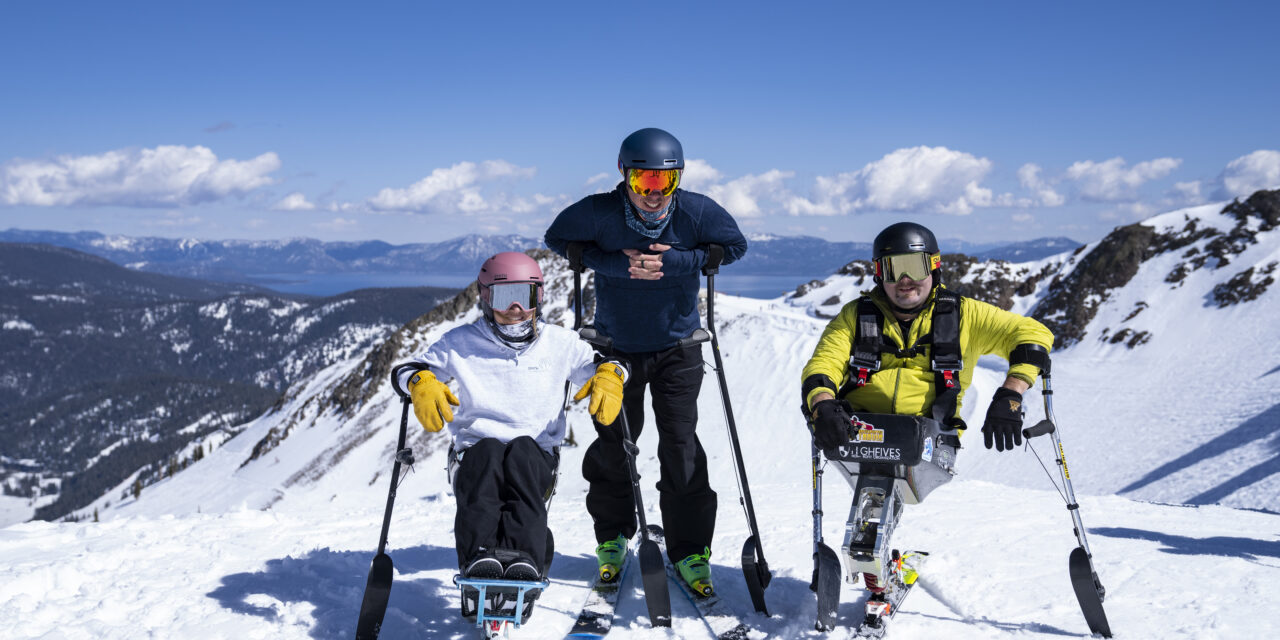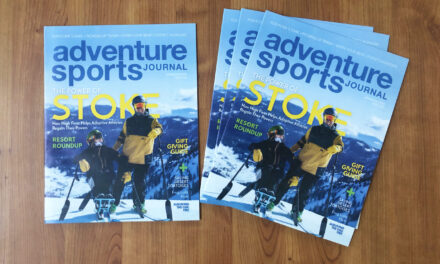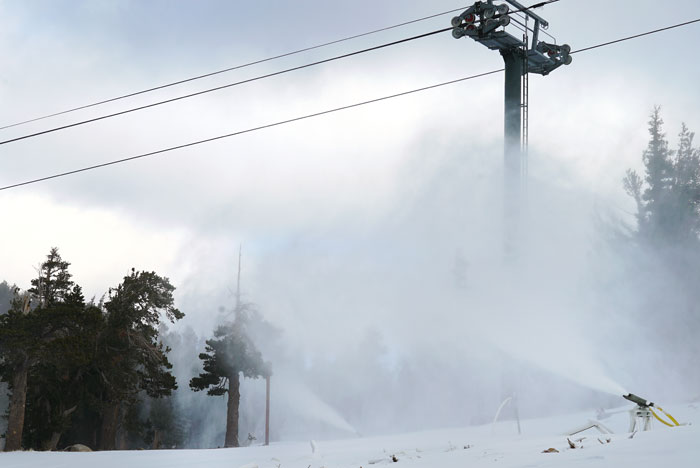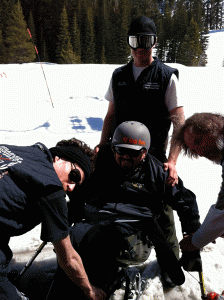- Death Valley’s Battle With Climate Extremes - 01/01/2024
- The Future of Homewood - 12/05/2023
- Kula Cloth - 10/18/2023
How Roy Tuscany and his non-profit High Fives Foundation are reshaping the lives of catastrophically injured athletes
By Leonie Sherman
In 2018, traveling nurse Rio Peterson decided he was done with spring skiing; too risky. But when he saw 12 inches of fresh powder the morning of April 16, he and his buddy Jack set out for a Tahoe resort. By the end of the day he was lying in the ICU with a broken neck.

Tuscany visits Rio Peterson at the Renown Health’s ICU days after his ski accident; this was the first time they met. Photo: Courtesy of the Peterson family
Roy Tuscany suffered his own spinal injury in 2006 while skiing at Mammoth Mountain; two years later he founded High Fives Foundation, a non-profit that helps athletes navigate life-changing spinal injuries. Tuscany was at Peterson’s side before he fully regained consciousness. Their friendship exemplifies one of Tuscany’s favorite sayings: Life will never be the same again, but it can be awesome.
Peterson was traversing a track he’d skied over 100 times when disaster struck. “As I changed aspect and slope, I went from bottomless powder to Sierra cement wind-scorched bumps. My knees were locked out and I hit it hard,” Peterson recalls. “The impact ejected me from my bindings and sent me up in the air just enough to come directly down on my head.”
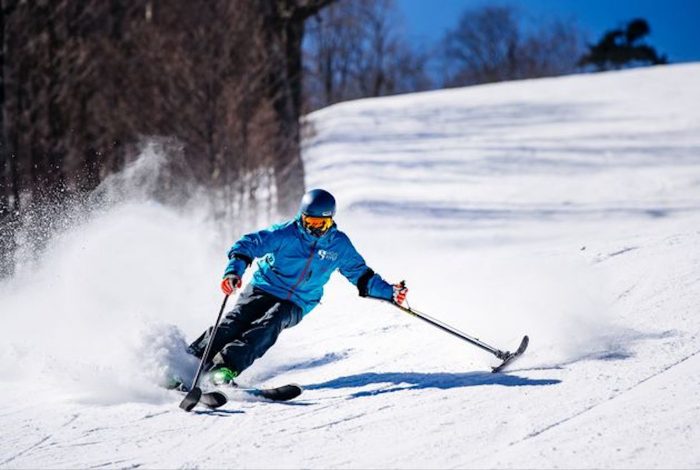
Tuscany, a 4-tracker, shreds a turn at his home mountain of Sugarbush in Vermont. Photo: Brooks Curran / High Fives Foundation
He recalls the following moments with crystal clarity. “I didn’t hear a sound, there was no pain, just a moment of stillness and total awareness of where my body was in time and space,” he explains. “I fell backwards and ended up lying face down on my stomach.” Jack skied past; to him it looked as if Peterson had taken an inconsequential spill.
“I spit some snow out of my mouth, took a few breaths to collect myself and then I was going to get up and dust myself off,” he continues. “But when I went to get up, I could not fucking move. I go to do it again, and dude, I can’t move. With my medical background I knew right away that I’d broken my neck and was paralyzed.”
Jack hiked back to check on him; Peterson asked him to dig a hole under his face so he could breathe. A woman they’d been skiing with went to notify ski patrol. And then Peterson noticed his breathing getting more labored. He realized that swelling from the initial traumatic impact was depriving his spinal cord of oxygen.
“Lying there, it’s just Jack and I, and I realized I might die right now,” Peterson explains. “Jack and I didn’t know each other very well, there was no real closeness between us. Sometimes I was like ‘is this guy going to punch me in the face?’” But as Peterson lay in the snow struggling to breathe, all that fell away.
“I was just like ‘all right what is important right now?’ And I knew the only thing that matters is love. I whispered ‘Jack, Jack, come over here.’ And he came over and was like ‘What?’ And I said, ‘Jack, I love you.’ I just wanted that to be the last thing I said; I had to tell someone I loved them.”
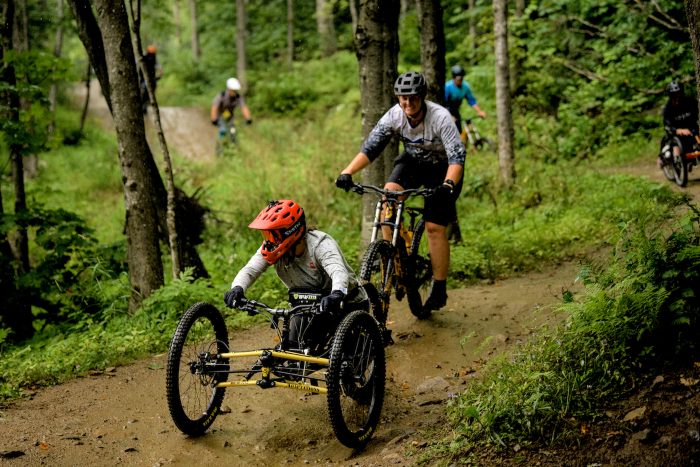
Alana Nichols rides the trails of Killington with Vermont Adaptive. Photo: Brooks Curran / High Fives Foundation
Their relationship has changed dramatically, and full-blown whole-hearted love flows between them today. Everything in Peterson’s life has changed greatly. He’s an accomplished adaptive athlete, studying to become a psychiatric nurse practitioner, and has reconnected with the first love of his life. He owes that progress to his own whole-hearted courage and determination plus the support of High Fives Foundation.
“High Fives is striving to cast a net of safety around outdoor sport,” explains Tuscany. “If someone gets hurt we want to help them be able to get outdoors again. If someone falls into a life-altering injury, we want them to know there are people out there who will give them a hand-up instead of a hand-out and slap them a high five throughout their recovery.”
“The massive thing I’ve recognized through this work is that sports are a byproduct of community,” Tuscany explains. “We know that if we can get people back to sport, we can use sport as a vehicle to get them back to community and social interaction. We use sport as a way to integrate people back into … people.”

High Fives athlete Trevor Kennison heading out to catch waves. Photo: Kate Abraham / High Fives Foundation
Tuscany was 24 and coaching for an elite ski academy when he skied 130 feet off a 100 foot jump. His thoracic 12 vertebra exploded, sending shrapnel into his spinal cord that paralyzed him from the navel down. Parents at the academy where he’d been coaching rallied and created a non-profit called Roy’s Recovery Fund.
“What those folks did, their physical and emotional support, allowed me to focus on recovery for two years,” Tuscany explains. “I sent care packages, but to truly thank those people who helped me relieve that emptiness inside of me, who helped me through that time when I had no idea what I should or shouldn’t be doing, to truly pay it forward, I realized I had to help others.”

Jason Abraham attacking the trails at Sky Tavern. Photo: Jordan Drew / High Fives Foundation
For 24 years, skiing had determined every decision he made. “When that’s taken away from you in an instant, you have two choices,” explains Tuscany. “You can sit outside that door of what used to be your life and try to get in when there’s no longer an entrance. Or you can walk through another door, close that door, and recognize you are on a completely new path. You have to decide if you’re going to be selfish or selfless. Those who decide to become selfless have the chance to become that classic Hollywood tragic hero and rise out of their own ashes.”
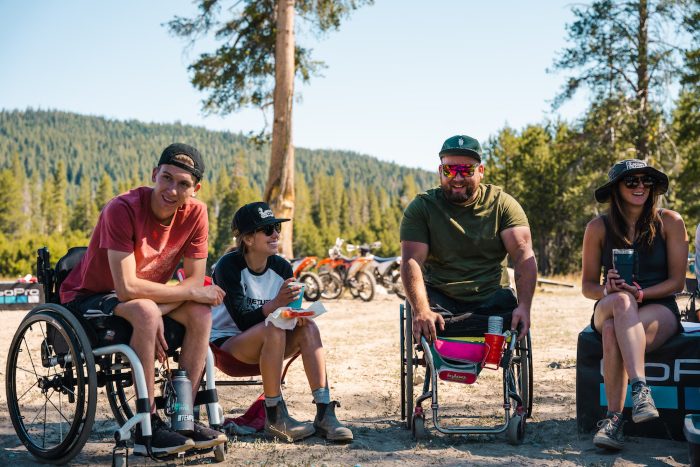
Athletes and staff members share a laugh at the Return to Dirt camp. Photo: Chris B / Generikal
So in 2009, he started High Fives Foundation. Thirteen years later they’ve helped 543 athletes from 43 different states and Canada, a quarter of them veterans; Tuscany knows them all personally. The Foundation has disbursed almost $7 million in adaptive equipment, medical and healing treatments, programming, vehicle and home modifications, insurance costs and media packages so people can share their stories with loved ones.
“For the first seven years, we averaged 100% growth every year, some years 250%,” Tuscany explains. “But I lost who I was, I became Roy High Five. It was too much to take on this idea of helping everyone, so I ramped up drinking heavily. One night with a really big donor I drank an entire handle of tequila. I woke up the next day and realized I could put my energy into drinking and my own death, or I could put my energy into High Fives.”
Since Tuscany quit drinking on October 31, 2016, High Fives has doubled their financial impact, tripled the size of their facility and added locations across the country. “I recognized that people loved me regardless of High Fives,” Tuscany admits. “And now people who love me can see that I love myself. My life has gotten even better. I met my dream girl [now wife, Alana Nichols], we have a kid, we travel. My mentality is that every negative moment has a positive outcome.”
“It took me 11 years to figure out the positive from my spinal cord injury,” admits Tuscany. “I was sitting in a room with 32 members of Rio’s family in Idaho. They were looking at me like I was a messiah. When I saw the look on Rio’s mom’s face, I thought about my own mom.”
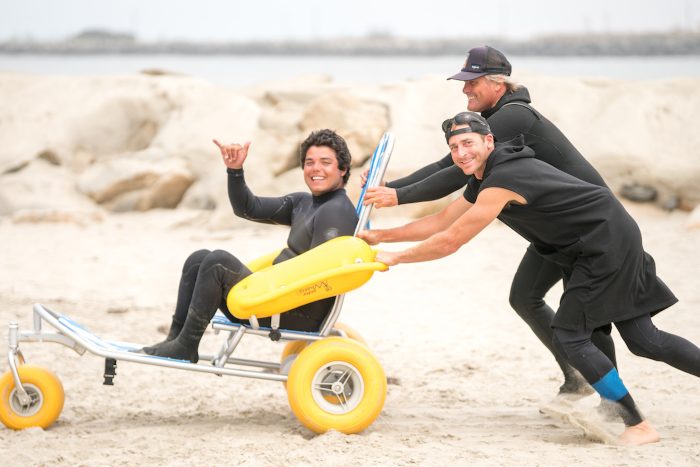
Landon McGauley, a High Fives athlete and now staff member giving shakas at the first-ever hosted adaptive surf camp. Photo: High Fives Foundation
Tuscany’s mother died of cancer in 2014 at 67 years old. She never got to meet her grandson. But after Tuscany’s injury, she spent 43 days at his side. “When I saw the look on Rio’s mom’s face, I realized I got 43 days with my mom that I never would have gotten. I really got to know who she was. When she died, I spent the last month of her life with her. We didn’t have to have all those end-of-life conversations because we had already had them.”
“That’s the beauty of this whole thing,” explains Tuscany. “Every negative outcome always has a positive. It’s not going to happen in a day or two weeks. As I help people through their recovery I try to help them realize there will be a positive out of the negative. Life will never be the same again, but it can be awesome.”
Learn more and see how you can help support the important work of the High Fives Foundation by going to highfivesfoundation.org.
Main image: Alana Nichols, Roy Tuscany in the center, and Lawrence Green stand above a run at Palisades Tahoe (Ming Poon)
Read other articles by Leonie Sherman here.

